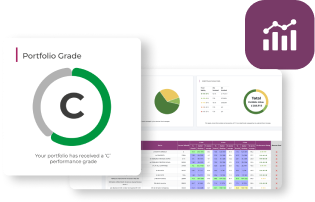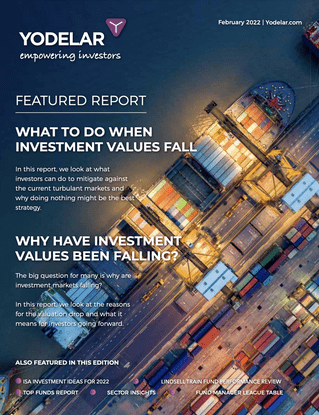-
Most portfolios underperform not because of market turmoil, but due to subtle, unnoticed drift driven by a lack of ongoing performance oversight.
-
Many advised investors do not receive any meaningful analysis of their portfolios fund performance, cost efficiency, or strategic relevance.
-
Complacency often looks like stability, yet hidden inefficiencies - such as underperforming funds and missed allocation opportunities - quietly erode returns.
-
Efficient portfolios require deliberate oversight: reviewing fund managers, monitoring strategy changes, and adapting to evolving market conditions.
Many investors don’t fall behind because they took excessive risk. More often, they miss out because they assumed everything was fine. A portfolio that appears stable, delivers steady returns, and matches an investor’s risk profile can still gradually lose its effectiveness – holding onto funds that no longer perform as well, missing allocation opportunities, or carrying higher costs that go unnoticed without regular review.
Whether you manage your own investments or receive financial advice, it’s easy to become comfortable. But in today’s fast-changing investment environment, comfort can sometimes lead to complacency. And in the long run, that can limit a portfolio’s ability to meet its objectives.
In this article, we explore how even well-constructed portfolios can lose their edge without regular and meaningful oversight. We outline the questions investors should be asking – and the steps to help ensure their investments remain not only suitable for their needs, but also as efficient and effective as possible.
Why Many Portfolios Quietly Fall Behind
Portfolios rarely lose value in a single moment. More often, they drift gradually away from their intended objectives. This drift doesn’t usually result from dramatic market events, but rather from a lack of regular, in-depth oversight.
For some investors – especially those working with a financial adviser – there is often an expectation that their portfolio is under continuous assessment. Reviews are conducted, risk profiles are updated, and asset allocations are periodically rebalanced. On the surface, everything may appear well managed.
But not all reviews go beyond the basics. While they may meet regulatory requirements, some may not deliver the depth of analysis needed to identify whether the portfolio remains fully aligned to the investor’s goals and market realities. What’s often missing is a more detailed reassessment of fund performance, a comparison against sector benchmarks, and a clear evaluation of whether each investment still serves a defined role within the broader strategy.
Without this level of scrutiny, portfolios can stagnate. Older holdings may remain in place even when better-suited alternatives exist. Charges may no longer be competitive. Allocations can remain unchanged despite shifts in the market or in the investor’s circumstances.
A meaningful review does more than confirm regulatory suitability – it ensures the portfolio is positioned for the future. It considers changes in fund management, strategy evolution, performance consistency, and how global market trends may affect outcomes.
The difference between a portfolio that remains broadly suitable and one that is actively monitored for underlying performance can be significant. While the impact may not be immediately obvious, it can compound over time – influencing growth, cost-efficiency, and the portfolio’s ability to meet long-term objectives.
The Limits of Routine Advice
Ongoing advice is a valuable and reassuring aspect of managed portfolios. It helps ensure that investments remain aligned to an investor’s goals, risk appetite, and financial circumstances. However, in some cases, the regular reviews that accompany this advice may lean more towards administrative checks than comprehensive portfolio evaluation.
These reviews often focus on confirming that the portfolio remains within the client’s agreed risk profile and that the asset allocation continues to meet the original investment strategy. These are essential steps and represent the foundation of good advice and regulatory compliance.
However, true portfolio oversight can involve more than this. It may include a deeper assessment of whether each fund continues to deliver value, whether charges remain competitive in light of alternatives, and whether the portfolio strategy remains appropriate given current and emerging market conditions.
Without this level of review, certain inefficiencies can persist unnoticed. A portfolio may still align with the intended level of risk but could be missing opportunities for better diversification, improved fund selection, or cost savings.
It’s also important to recognise that not all portfolios require constant change. However, investors sometimes assume that receiving advice automatically results in continuous optimisation. In practice, meaningful improvement comes from regular, objective evaluation – and where appropriate, action. Without this, advice risks defaulting to maintenance rather than ongoing enhancement.
The Subtle Signs of Portfolio Complacency
Complacency within a portfolio doesn’t usually present as a sudden loss. Instead, it tends to emerge gradually – through a pattern of inaction, missed opportunities, or outdated assumptions. It’s not necessarily caused by major errors or short-term underperformance, but by the absence of regular, in-depth review.
In many cases, investors may be unaware that a fund has fallen behind its sector peers or that its management team has changed approach. They may not realise that they hold overlapping funds with similar exposures or that lower-cost alternatives now exist. These types of issues are not always visible in standard portfolio summaries or annual review documents – they require active and informed assessment to uncover.
A fund that once delivered top-quartile returns may now sit closer to the average. A portfolio that was originally balanced may become skewed due to market movements or performance divergence. While these changes may seem minor, over time they can diminish the portfolio’s ability to meet its long-term objectives.
The difficulty is that everything may still appear broadly in order. But the impact of small, unmanaged inefficiencies becomes more apparent when reviewing long-term growth outcomes. What once felt like a stable and comfortable portfolio can gradually become less effective – and potentially fall short of its intended goals.
Does Your Portfolio Reflect Where You Are - And Where the Market Is?
An efficient portfolio is not just one that matches a risk score. It’s one that evolves in line with your objectives and responds to changes in the wider investment environment. Yet many portfolios remain static – built on assumptions that may have made sense at the time, but which haven’t been revisited as circumstances and markets have changed.
Market conditions shift. Fund managers can alter their strategies or move to different firms. Some asset classes gain prominence while others fall out of favour. A portfolio that hasn’t been reviewed in light of these changes may no longer be as well positioned as it once was.
Effective portfolio management involves regular review and thoughtful adaptation. It considers whether each fund still contributes to the portfolio’s objectives, whether the overall strategy is still appropriate for the investor’s current stage in life, and whether improvements could be made – such as through cost savings, enhanced diversification, or better risk-return balance – without taking on unnecessary risk.
If these types of questions haven’t been asked recently, or if you’re unsure when your portfolio was last reviewed in detail, it may be worth considering whether it remains as effective and aligned as it could be.
⇒ Book Your Free Portfolio Review Here
Clarity Begins With the Right Questions
Many investors rely on surface-level indicators – such as recent returns or whether their portfolio matches a risk profile – to judge portfolio health. But real insight often comes from asking more probing questions. These questions help challenge assumptions and reveal whether there may be room for improvement.
Start by asking yourself, or your adviser:
- When was each fund last reviewed not just for suitability, but against the strongest performers in its sector?
- Has the positioning of your portfolio changed in response to recent market trends, or has it remained largely static?
- Could better results have been achieved with the same level of risk, had the strategy been more adaptive?
These are not routine compliance checks. They are questions that require clear, evidence-based answers. If they cannot be answered confidently, or if they have not been addressed in recent reviews, it is likely your portfolio is operating below its potential.
True clarity in investing does not come from reassurance - it comes from insight. And insight begins with asking the questions that most portfolios never get asked.
Challenge Assumptions, Improve Outcomes
Success in investing is rarely about reacting to short-term noise. It is about staying aligned with long-term goals, adapting to change with discipline, and making informed decisions at the right time. That requires clarity. It requires oversight. And most importantly, it requires a willingness to challenge assumptions.
Complacency is not always obvious. But left unaddressed, it can quietly undermine everything your portfolio is meant to achieve. Whether your investments are self-managed or under advice, efficiency must be earned - through regular, meaningful, and objective review.
The best portfolios are not the ones that are simply risk-aligned or compliant. They are the ones that are reviewed with intent, managed with insight, and refined with purpose.
If your portfolio hasn’t been assessed in this way, now is the time.

















